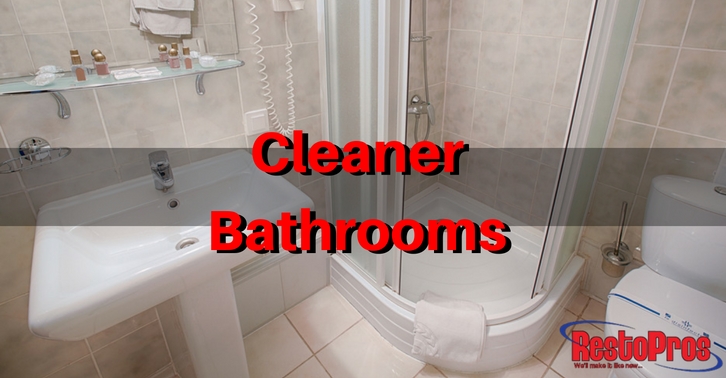 Out of all the places in your home, the bathroom is exposed to more water than anywhere else – the kitchen is a very close second though. Because most bathrooms are secluded, lack windows, and are typically more humid than the rest of the home they have a greater risk of mold infestation than anywhere else. So what should you do to make sure that your bathroom is not a haven for mold and mildew?
Out of all the places in your home, the bathroom is exposed to more water than anywhere else – the kitchen is a very close second though. Because most bathrooms are secluded, lack windows, and are typically more humid than the rest of the home they have a greater risk of mold infestation than anywhere else. So what should you do to make sure that your bathroom is not a haven for mold and mildew?
1. Improve Ventilation
Cycling air is great for more than just keeping odors out. Improved ventilation prevents high humidity by cycling out excess moisture and adding in fresh air. Dry air that’s cycled into the room will help evaporate moisture off of surfaces, lowering the risk of mold. You should also run your exhaust fan for 30-45 minutes after a shower to cycle out all of the humid air that remains.
2. Fix Leaks
We’ve covered leak repairs before. With the amount of plumbing that exists in your bathroom, there’s a higher chance of leaks from fixtures and pipes here than anywhere else in the home. The moment that you see water damage, pooling water, or a leaking fixture you should get it repaired immediately. A leak is always going to lead to an added cost, even if it’s just an increased water bill. Get leaks seen to immediately, every time.
3. Use Tile
Use smooth tile in your bathroom rather than a textured tile. Textured tile adds surface area and leaves nooks, crannies, and seams within the tile that need to be cleaned regularly. Tile, which is already fairly easy to clean, is more hygienic when it’s smooth because it’s less likely to collect moisture. Smooth tile it also easy to clean since it is non-porous often requires on a quick pass from a cleaning sponge (with soap or detergent) to clean off the surface. You should also try using larger tiles if at all possible. Large tiles mean less grout which means fewer places for moisture to accumulate and mold to grow.
4. Seal All Grout
Enhanced tile grout is excellent because it’s already designed to be mold resistant. But in the bathroom, that’s not enough to prevent mold from growing inside tile grout. You need to take steps to seal out moisture so that it doesn’t feed mold spores locked inside the mildly porous surface of grout. Sealants will also help to prevent discoloration by preventing dirt and grime from getting locked into the grout, making cleanup easier later.
Be sure to use a penetrating sealer for shower tiles and a membrane sealer for floor tiles.
5. Clean Regularly
The final step in any quality bathroom-mold defense plan is to clean your bathroom regularly. Remove excess water from the shower using a squeegee or towel and leave the shower curtains open to allow air to circulate through easily. Take the time to give your bathroom a deep clean once a week and use a mold cleaner to make sure you prevent anything from starting to grow in the first place. Once you get in the habit of cleaning your bathroom regularly, it will be much easier and you’ll be more likely to catch any problems before they become too big to handle.
Don’t forget to follow RestoPros on Facebook, Twitter, LinkedIn, and Google+ for new Updates, News, and Discounts!
